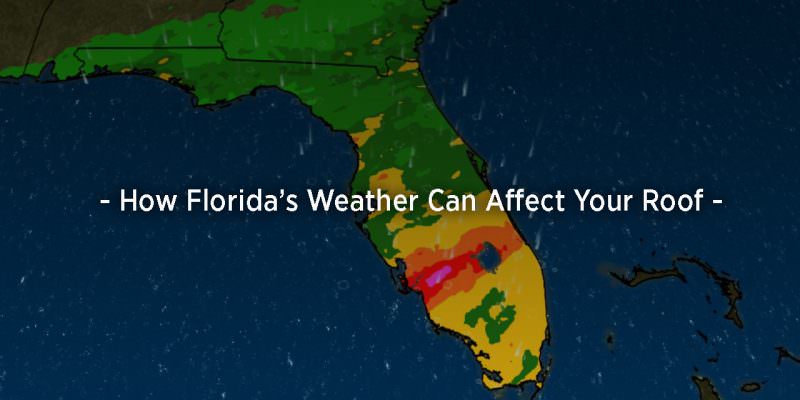When you stop to think about it, we really do ask a lot of our roofs, don’t we? Consider this: a roof has to sit outside in all kinds of weather 24 hours a day, seven days a week. And after years of doing that, we expect it to not just protect us, our families, and our belongings from the elements- we expect it to look spectacular as well.
That’s an awful lot to ask.
Florida roofs have an especially harsh climate to deal with. True, we don’t get the massive snowfalls or the freeze/thaw cycles northern roofs are subject to. But with our blazing sun, frequent tropical downpours, hurricane winds, extreme humidity, occasional wintry blasts, bugs, birds, and salt air, roofs down here get a workout not seen anywhere else in the country.
And, of course, any single one of those can damage a roof, necessitating expensive repairs.
The main reason people flock to Florida is, of course, our beautiful sun. But that same sun can wreak havoc on any roof. Ultraviolet radiation- the culprit behind every sunburn- can also deteriorate asphalt- or plastic-based products over time. And not even concrete tile is immune to the ravages of the sun: over the years, exposure to UV can cause the color of concrete tile to fade. Of course, UV radiation is even more damaging to shingle roofs, especially older ones. Years of sun exposure can cause shingles to become thin and brittle, leaving them susceptible to other weather elements.
Testing has shown that when the Florida sun is almost directly overhead in the summer, the surface of a roof can reach close to 200 degrees. Making matters worse, a sudden downpour can rapidly cool that roof to room temperature in a matter of seconds. And this cycle can repeat itself dozens of times each month- sometimes even two or three times in a single day.
As you can imagine, this is very stressful to every component of your roof. Constant extreme humidity is another problem for Florida roofs. We’re surrounded by water and blessed with many lakes and swamps, but the ever-present moisture that results can compromise even the best-applied seams and seals.
That moisture can also lead to the runaway growth of moss, algae, and mildew. Besides being unsightly, such growths can trap moisture where it can cause rot and deterioration.
Wind is, of course, another major concern- especially winds that accompany the tropical storms and hurricanes for which Florida is infamous. A wind that blows strong enough can get up underneath tile, shingles, or other roofing components that were manufactured and/or installed to substandard specifications. And once those roof components are compromised, there’s nothing to slow down the possible destruction of the entire roofing system except blind luck.
Also, most roofs are designed to prevent the intrusion of rain that’s falling vertically, or nearly so. Wind-driven rain can approach a roof not just from the top, but also from the sides as well, and even from below in certain cases. And as you might imagine, water intruding into your home or business can cause many problems.
Salt air is still another problem for Florida homes and businesses, many of which are near the state’s abundant coastline. That salt can be corrosive to certain metal flashings and other roof elements, leading to premature leaks and other roof component failures. And even buildings far from shore are susceptible to salt air corrosion when a hurricane or tropical storm passes through, carrying salt-laden sea spray sometimes miles inland.
With our years of roofing excellence in Florida, Gulf Western Roofing is uniquely qualified to check the condition or your roof, and make sure it continues to provide the protection and beauty you demand of it. Don’t trust just any roofer, trust the professionals at Gulf Western Roofing.



